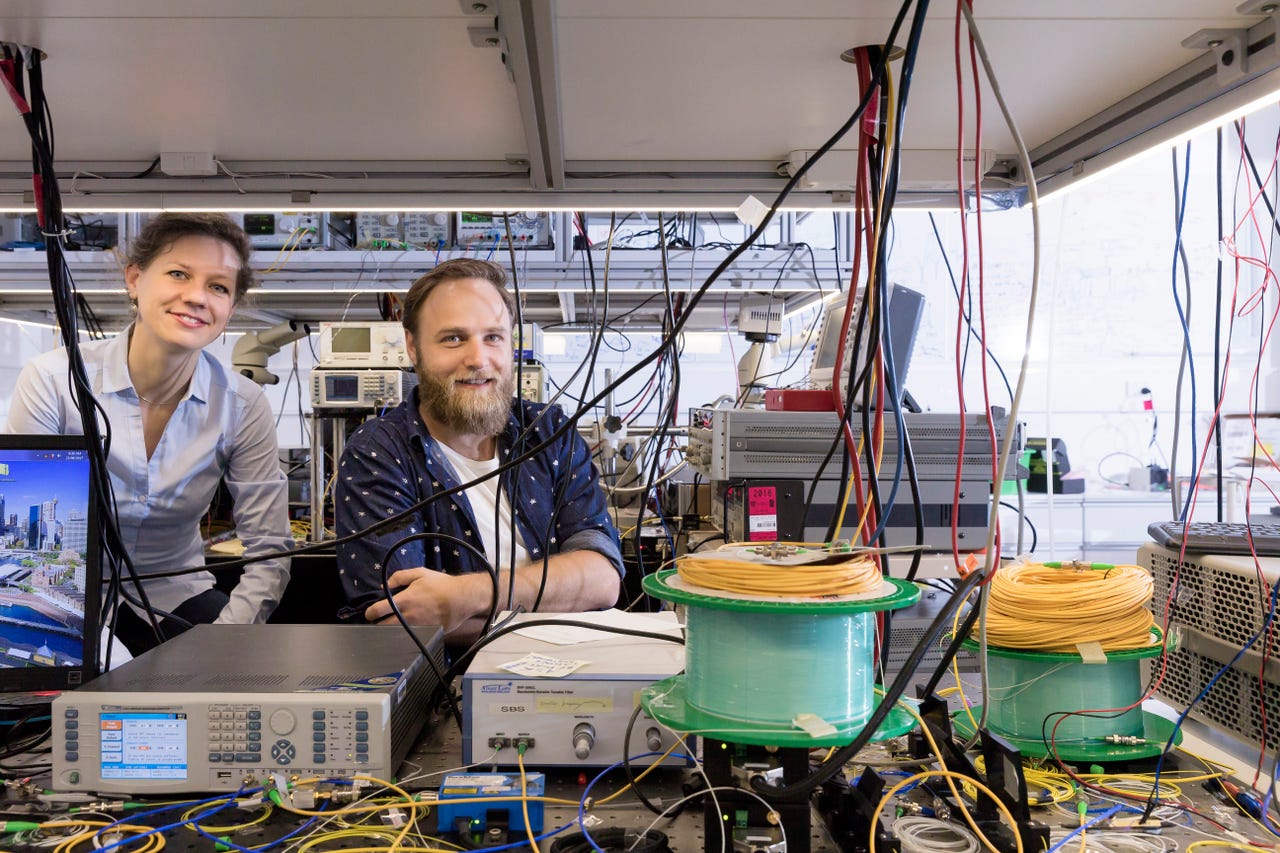University of Sydney researchers turn optical data into readable soundwaves


Dr Birgit Stiller and Moritz Merklein in their laboratory at the University of Sydney Nanoscience Hub.
A team of researchers from the University of Sydney (USyd) announced they have dramatically slowed digital information carried as light waves, paving the way for more efficient optical fibre networks and data storage technologies.
In what has been labelled a first, the researchers achieved the breakthrough by transferring the data into sound waves in a microchip.
According to the university, transferring information from the optical to acoustic domain and back again inside a chip is critical for the development of photonic integrated circuits -- essentially microchips that use light instead of electrons to manage data.
The researchers are developing the chips to be used in telecommunications and optical fibre networks, as well as in datacentres where the traditional electronic devices currently used are susceptible to electromagnetic interference, produce too much heat, or use too much energy, USyd explained.
The university said that although light is an excellent carrier of information and is useful for taking data over long distances between continents through fibre-optic cables, the speed advantage can become a nuisance when information is being processed in computers and telecommunication systems.
Light-speed data has its own in-built problem, the university added, which is the necessity to slow things down on a computer chip to allow for "something useful" to be done with the information.
"The information in our chip in acoustic form travels at a velocity five orders of magnitude slower than in the optical domain," Dr Birgit Stiller, research fellow at USyd and supervisor of the project, said. "It is like the difference between thunder and lightning."
Stiller, one of the lead authors of the solution published in Nature Communications, said the delay allows for the data to be briefly stored and managed inside the chip for processing, retrieval, and further transmission as light waves.
"Our system is not limited to a narrow bandwidth. So unlike previous systems this allows us to store and retrieve information at multiple wavelengths simultaneously, vastly increasing the efficiency of the device," she added.
In traditional microchips, this is done using electronics, Stiller explained, but as computers and telecommunication systems become bigger and faster, the associated heat is making some systems unmanageable.
"The use of photonic chips -- bypassing electronics -- is one solution to this problem being pursued by large companies such as IBM and Intel," the second of three co-lead authors Moritz Merklein added. "For this to become a commercial reality, photonic data on the chip needs to be slowed down so that they can be processed, routed, stored, and accessed."
Stylised chip design.
Co-lead authors Stiller, Merklein, and professor Benjamin Eggleton hail from the Australian Research Council (ARC) Centre of Excellence for Ultrahigh bandwidth Devices for Optical Systems (CUDOS), and the chip was fabricated at the Australian National University's Laser Physics Centre, which is also part of the CUDOS Centre of Excellence.
Another team of USyd researchers recently partnered with Nanyang Technological University in Singapore to develop a solution for recharging zinc-air batteries that could see them applied to electronic devices in place of lithium ion batteries.